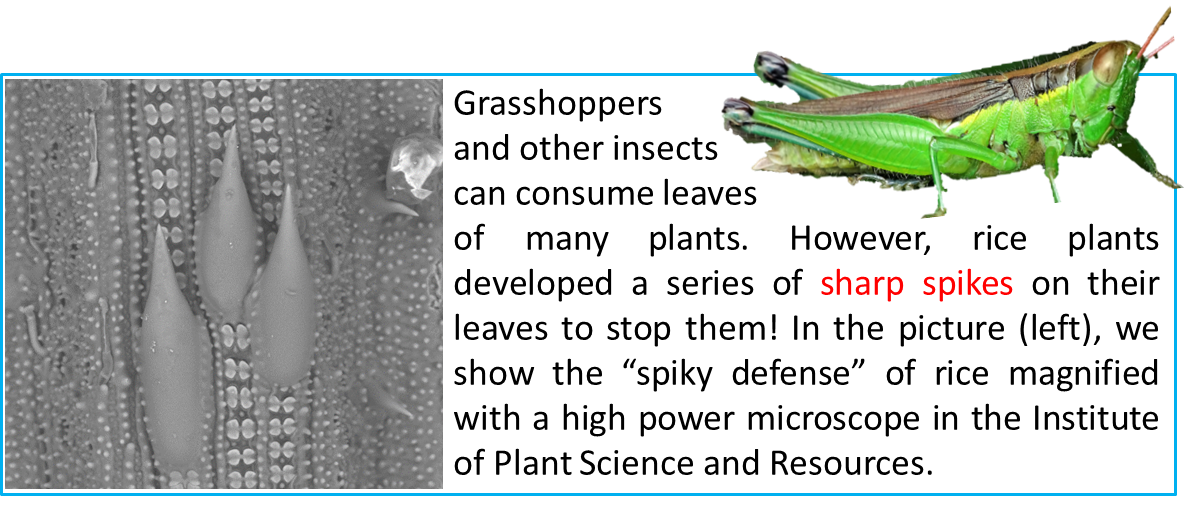
新着情報
Sharp spikes on their leaves help rice plants to fight against grasshoppers and other insects
[著者] Joackin B. Andama, Kadis Mujiono, Yuko Hojo, Tomonori Shinya, Ivan Galis
[発表タイトル] Non-glandular silicified trichomes are essential for rice defense against chewing herbivores
[掲載論文] Plant, Cell and Environment (accepted manuscript online)
https://doi.org/10.1111/pce.13775
[使用した共通機器] LC-MS/MS, GC-MS, SEM
[内容紹介] Because of easy cooking, good taste and possibility of long storage, rice became popular food source in many African households. Therefore, NERICA rice, which actually means “New Rice for Africa”, was developed with a strong aim for further promotion and wider spread of rice production in Africa. NERICA varieties were obtained by genetic cross between two rice species, one from Asia and one from Africa, in order to combine a high productivity of an Asian parent, and an adaptation to local conditions of an African parent. Although NERICA varieties show good productivity and satisfactory growth in Sub-Saharan Africa, they have not been extensively tested for their resistance against herbivores. When we planted NERICA 1, 4 and 10 in the paddy field in Japan, we immediately noticed that compared to local Japanese rice varieties, all NERICAs were much more damaged by grasshoppers and other pests. By close comparison with Nipponbare, one of the strong local cultivars, we found that NERICAs completely lack series of abundant spiky trichomes on the surface of their leaves. In our report in Plant Cell & Environment, we show a strong evidence that these spiky structures are actually very important for efficient defense of rice plants against grasshoppers and other abundant herbivores in the field. We also show that the spikes (trichomes) on rice surface must be impregnated with silicon (a mineral obtained by plants from soil) to gain sufficient mechanical strength, and thus ability to rescue rice plants from extensive damage by outnumbering herbivores in the field. (文責 Ivan Galis)

お問い合わせ先:Ivan Galis
Group of Plant-Insect Interactions





